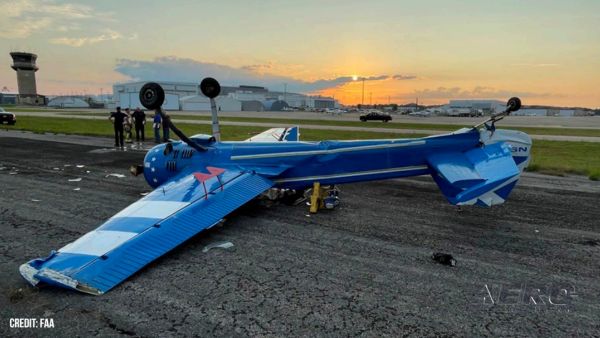Wed, Nov 05, 2003
CarterCopter Gang To Build NextGen Rotor/Prop System
It's not often that
we're pleased to hear that our government is getting ready to spend
a few more of our tax dollars... but this time, I think that we
tax-payers might actually get our money's worth.
Carter Aviation Technologies (Carter) has told ANN that it has
been awarded their first contract from the Defense Advanced
Research Projects Agency (DARPA). The contract was awarded to
support Carter's development of their next generation propeller and
rotor. Design work for the new prop and rotor has been
initiated.
This next generation two bladed rotor is designed for higher Mu
flight. It will be 45 feet tip-to-tip with 50 sq. ft. of lifting
surface and weigh approximately 300 lbs. Of that weight, 110 lbs is
inertia weights located in 'leading edge triangular deltas' at the
rotor tips. The rotor could produce 12,000-lbs of lift at MSL on a
standard day. The ratio of the rotor's weight to an 8,000-lb
helicopter would be .0375, which is only 1/2 to 1/3 the rotor
weight of most helicopters. The inherent lightweight Carter rotor
design permits using a safety factor that is higher than that
normally found in helicopters.
Carter's new, scimitar,
8-foot diameter propeller should be able to absorb 600 hp as a
2-bladed version and 1200 hp as a 4-bladed version. The highly
swept blades will permit the use of higher tip speeds, higher
coefficients of lift and thicker, more structurally efficient
airfoils without getting into critical Mach. This propeller can be
optimized for better static and climb efficiencies without losing
any noticeable cruise efficiency up through 300 mph. Weight of the
2 bladed version including the pitch change mechanism is expected
to be less than 60 lbs.
The DARPA contract is a one-time agreement to gain a better
understanding of Carter's unique propeller and rotor technologies.
The $250,000 in funding will help Carter demonstrate these
technologies and gain more test data over a wider spectrum of
performance. Carter is pleased to have DARPA interest in their
rotor and propeller technologies. After more than four years of
flight-testing with the original prototype, Carter is committed to
moving forward with its next generation aircraft and conquering
high-Mu flight.
More News
Also: Horizon X7 eVTOL, Golden Dome, Merlin Exp A/W Cert, Rotors v Trees SpaceX launched its ninth flight test of a complete Starship vehicle nearly on time after a few minutes of >[...]
From 2021: The Inside Skinny On What Being An ANN Oshkosh Stringer Is All About By ANN Senior Stringer Extraordinare, Gene Yarbrough The annual gathering at Oshkosh is a right of p>[...]
Aircraft shipments through Q1 2025 show that piston airplanes increased to 353 units, turboprops increased to 133 units, and bizjets increased to 141 units. The total value of airp>[...]
Handoff An action taken to transfer the radar identification of an aircraft from one controller to another if the aircraft will enter the receiving controller's airspace and radio >[...]
Aero Linx: The Great War Aviation Society The Great War Aviation Society is a registered charity (1117741) dedicated to researching, preserving and sharing information about this t>[...]
 Airborne-NextGen 05.28.25: SpaceX Tries Again, Electra Blown Wing, Solar Record
Airborne-NextGen 05.28.25: SpaceX Tries Again, Electra Blown Wing, Solar Record Oshkosh Memories: An Aero-News Stringer Perspective
Oshkosh Memories: An Aero-News Stringer Perspective Aero-News: Quote of the Day (05.27.25)
Aero-News: Quote of the Day (05.27.25) ANN's Daily Aero-Term (05.27.25): Handoff
ANN's Daily Aero-Term (05.27.25): Handoff ANN's Daily Aero-Linx (05.27.25)
ANN's Daily Aero-Linx (05.27.25)


